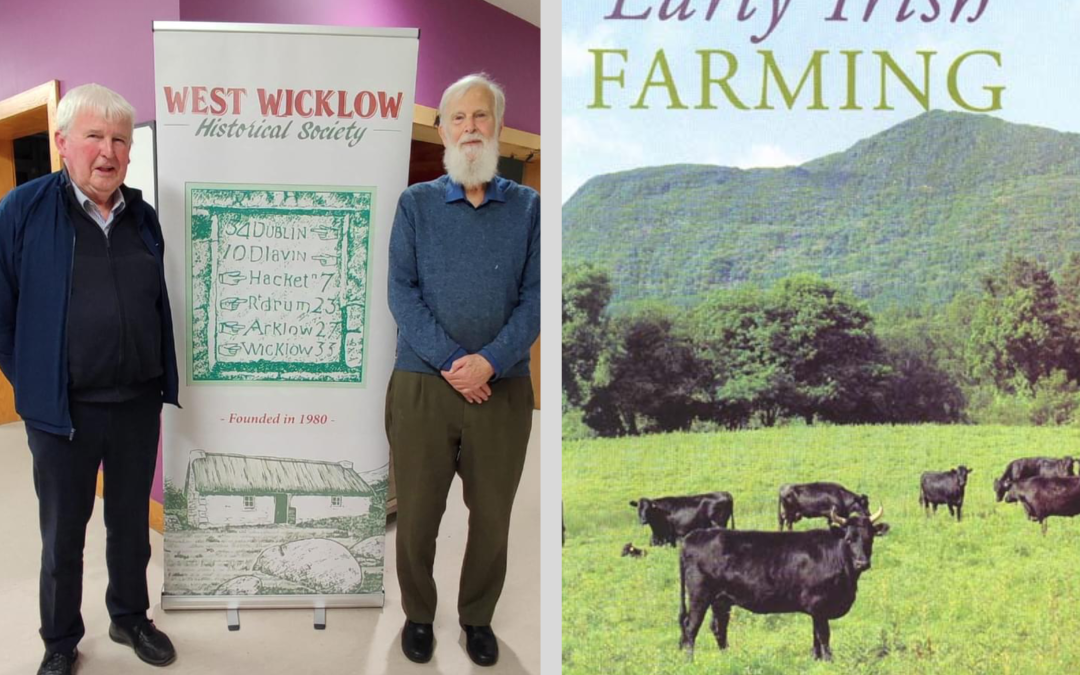On the evening of Tuesday 22 October 2024 at the Lalor Centre, Baltinglass Fergus Kelly FRIA provided a very interesting lecture on Irish farming practices prior to the Norman Invasion. As Dr. Kelly drew on early law texts and literary sources including the Triads, we were provided with vivid details of not only early agrarian methods but the importance of rank and the regulation of everyday life in Irish society. The monastic farms were the source of many innovations in Irish agriculture.
We learned about our ancestor’s fondness for cows which were kept primarily for milk production. Swiss style bells were hung about their necks and it was a public duty to protect them from predatory wolves in the summertime when they grazed in the hills. Pigs were fattened on acorns and roast pork was prized above all other meats. Sheep were valued for their wool. Oxen pulled the ploughs . Horses were small and light and pulled harrows until the introduction of stronger breeds in the fifteenth century.
We also learned about our ancestors’ diet and the crops they grew – the most popular being oats, with barley being used for making beer. Because of the damp climate it was more difficult to grow wheat; wheaten bread was highly prized. The hunting of the red deer and wild pig was the pursuit of the ruling class. The dog was highly valued and played an important role in guarding livestock. The rabbit and donkey were only introduced into Ireland with the arrival of the Normans. We are indebted to Fergus Kelly for sharing his research into these thought-provoking aspects of early Irish social history.
Photo (L to R): John Glennon and Fergus Kelly; The cover of Early Irish Farming: the Evidence of the Law Texts published 1997.

